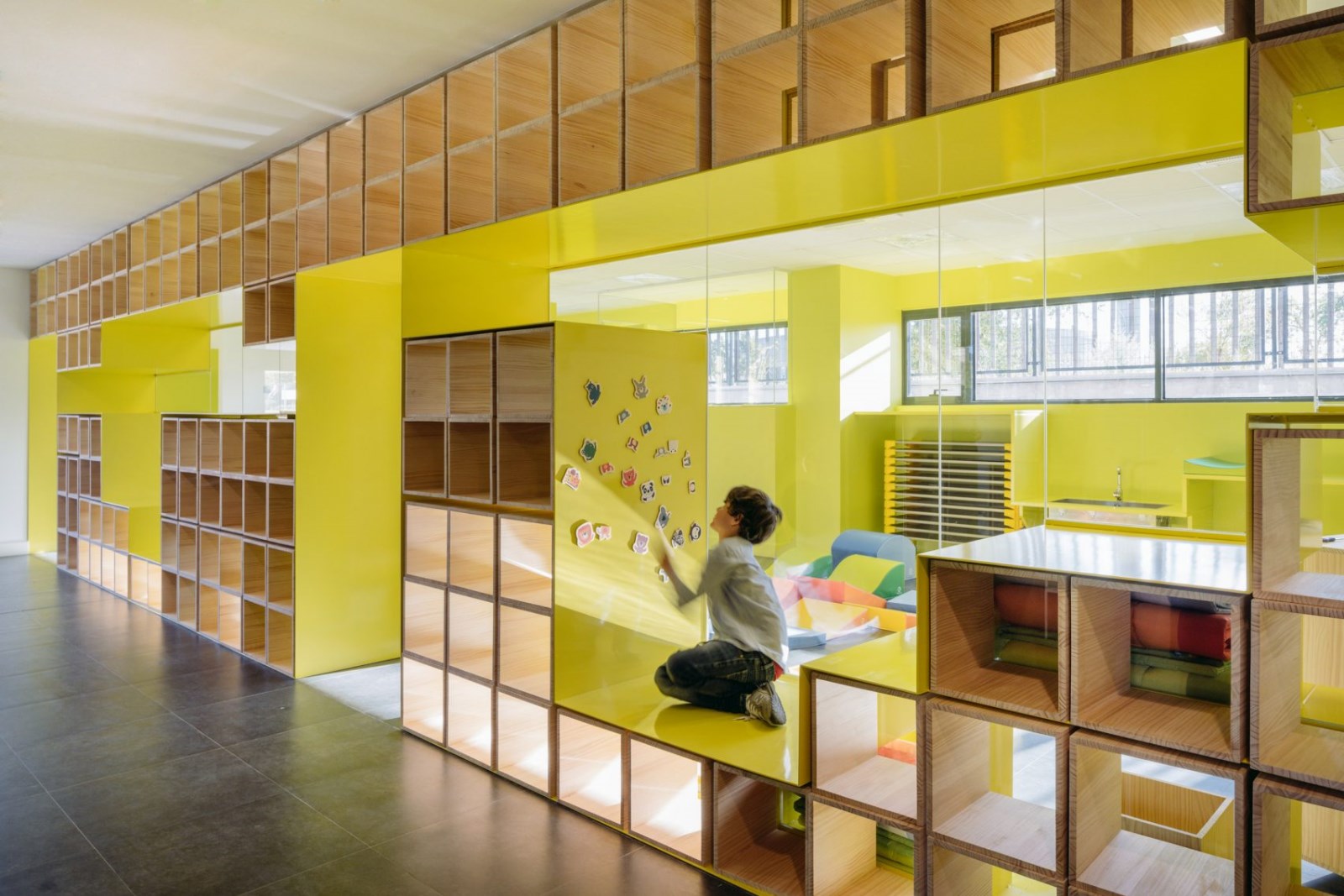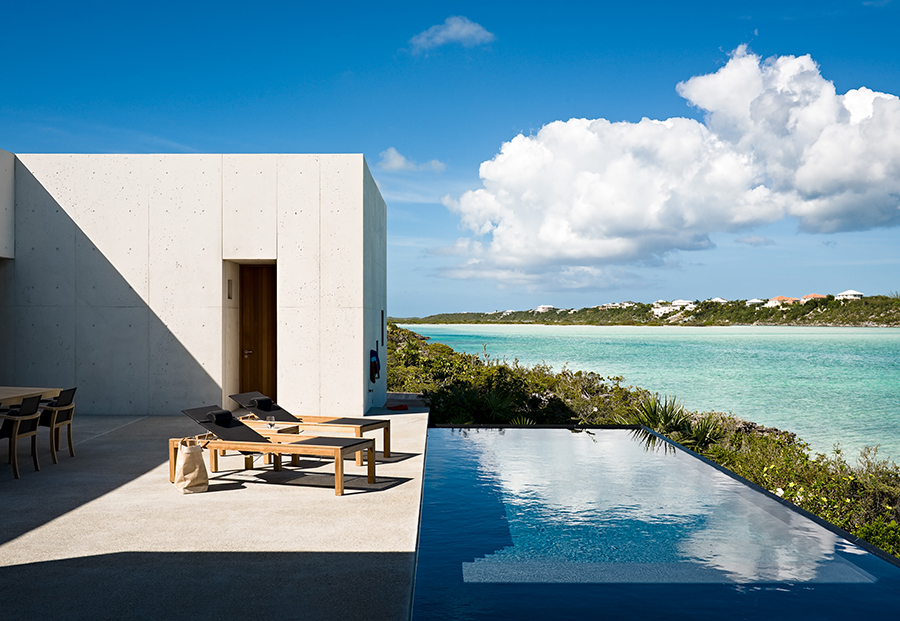Bill R. Foster and Family Recreation Center Cannon Design
2016-08-03 11:00
© Peaks View
峰景


架构师提供的文本描述。密苏里州立大学(MSU)比尔·R·福斯特和家庭娱乐中心被认为是校园景观中一种水晶的地质形式。一条新的步行校园通道将学生带到大楼的入口和中心,并把学生带到其他的校园目的地。石头外壳-指的是构成MSU校园的具有历史意义的石头建筑-被切割开来,露出了清凉的金属和玻璃内部,暴露了娱乐的活动。这条小路微妙的上下起伏使得池子和储物柜的功能可以在较低层的步道下面滑行,而上面的慢跑跑道则为经过大楼的学生提供了掩护。在内部,居住者通过精心测量的切口和缝隙不断地与校园重新连接,这在建筑外部造成了某种程度的不太明显的透明度。
Text description provided by the architects. The Missouri State University (MSU) Bill R. Foster and Family Recreation Center is conceived as a crystalline, geologic form in the campus landscape. The chiseled stone mass is fractured by a new pedestrian campus passage that brings students to the entrance and center of the building, and on to other campus destinations beyond. The stone shell – referencing the historic stone buildings that define the MSU campus – is cut away to reveal a cool metal and glass interior, exposing the activities of recreation. The path’s subtle rise and fall allows pool and locker functions to slip below the walk on the lower level, while the jogging track loops above providing cover to students passing through the building. Inside, occupants are continually reconnected to campus through carefully measured cuts and apertures, creating a degree of transparency not readily apparent in the building’s exterior.
© Gayle Babcock
C.Gayle Babcock


MSU中心将以前分散的娱乐服务结合在一起,创建一个集中而有凝聚力的娱乐项目,该中心位于学生生活功能、学术核心以及其他体育和娱乐场所之间的一个关键的校园站点上。该中心的定义特征-连接两个校园区的无栏通道-创造了一种独特的空间体验,帮助解决了规划和分阶段的挑战。它的空间特性有助于通过建筑物的流体经验。
Bringing together previously scattered recreational offerings to create a centralized and cohesive recreation program, the MSU center is located on a pivotal campus site between student life functions, the academic core, and other sports and recreation venues. The center’s defining feature – the column-free passageway connecting two campus precincts – creates a unique spatial experience that helped solve both planning and phasing challenges. Its spatial qualities contribute to the fluid experience of passing through the building.
© Gayle Babcock
C.Gayle Babcock


Plans Diagram
平面图


© Gayle Babcock
C.Gayle Babcock


该建筑的外部是由定制的铸石面板组成的,被缩放到适合建筑物大小的巨大尺寸,并与校园石灰石建筑一起着色。中档线性LED灯沿穿过建筑物的行人通道排列.建筑内部是由一个动态调色板来定义的,它补充了学校的色彩,并在玻璃、地板和其他材料中使用了协调的口音。
The building’s exterior is comprised of custom cast stone panels, scaled to a monumental size appropriate to the building’s size and colored to accompany the campus limestone architecture. In-grade linear LED lights line the pedestrian path that cuts through the building. The building’s interior is defined by a dynamic palette that complements the university’s colors, with coordinating accents applied in glazing, flooring and other materials.
© Bruce Damonte
布鲁斯·达蒙特


娱乐项目包括一个3层体育馆,一个多用途的运动场,1.8万SF的体重健身和有氧空间;一个室内慢跑跑道;一个游泳馆,有休闲水、膝上车道和室外甲板;多功能健身室;攀岩墙;以及其他支持空间,包括更衣室和行政空间。该建筑回应了学生对强化娱乐节目的需求,MSU学生领袖和团体被整合到整个设计过程中。
The recreational program elements include a 3-court gymnasium, one with a multi-use play surface, 18,000 sf of weight fitness and cardio space; an indoor jogging track; a natatorium with both leisure water, lap lanes, and an outdoor deck; multi-purpose rooms for wellness activities; a climbing wall; and other support spaces, including locker rooms and administrative space. The building responds to increased student demand for enhanced recreational programming, and MSU student leaders and groups were integrated into the entire design process.
© Gayle Babcock
C.Gayle Babcock






































Architects Cannon Design
Location United States,N Missouri Ave, Springfield, MO, USA
Category Recreation & Training
Architect in Charge Cannon Design
Design Team David Polzin, Ken Crabiel, Rich Bacino, Thomas Bergmann, Chris Hayes, Reed Voorhees, Joe Scott, Brendan Smith
Area 98500.0 ft2
Project Year 2012
Photographs Gayle Babcock, Bruce Damonte, Peaks View
Manufacturers Loading...































